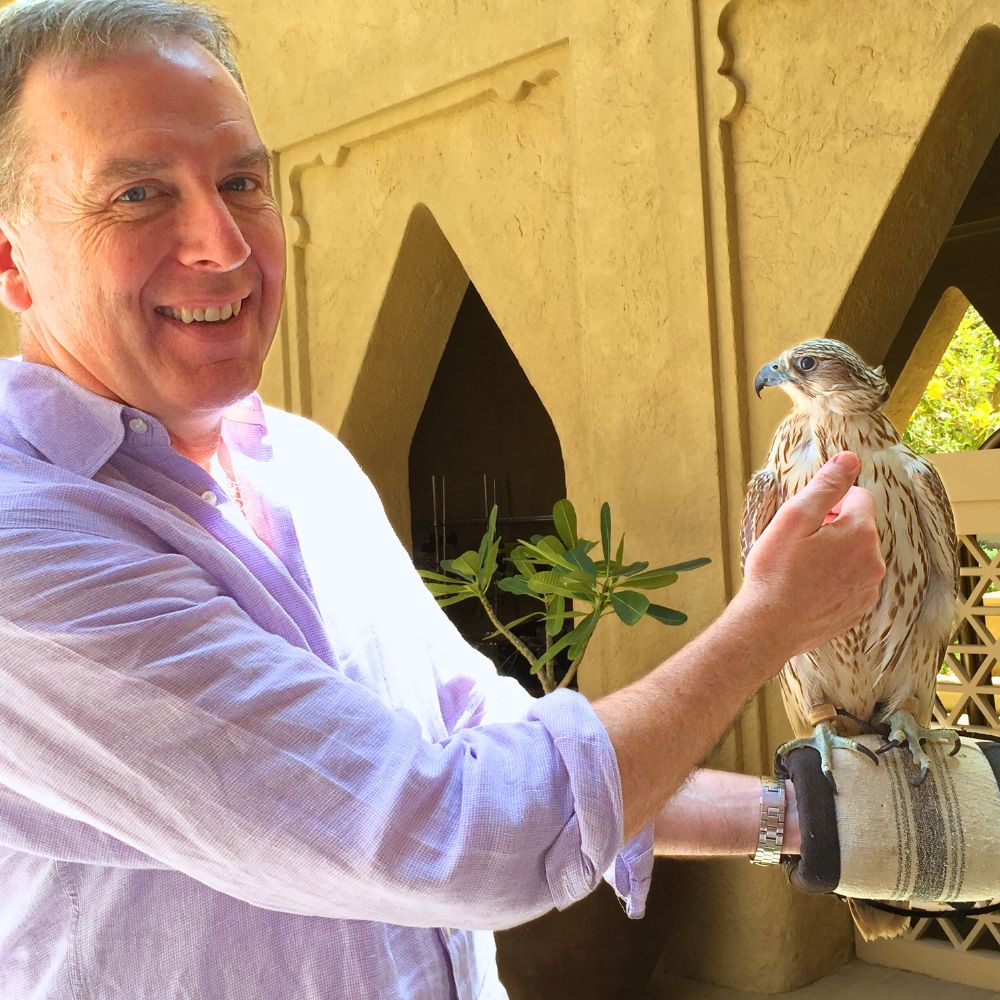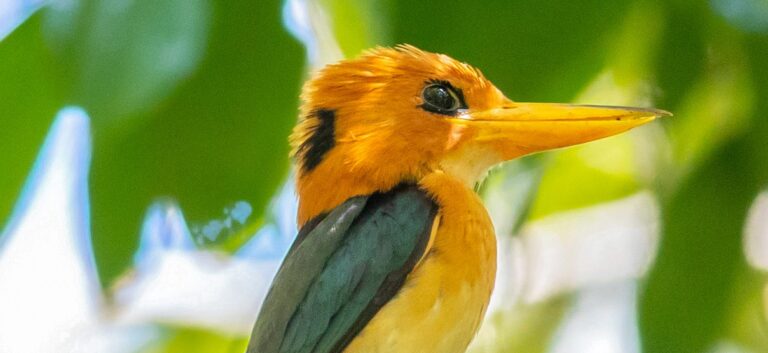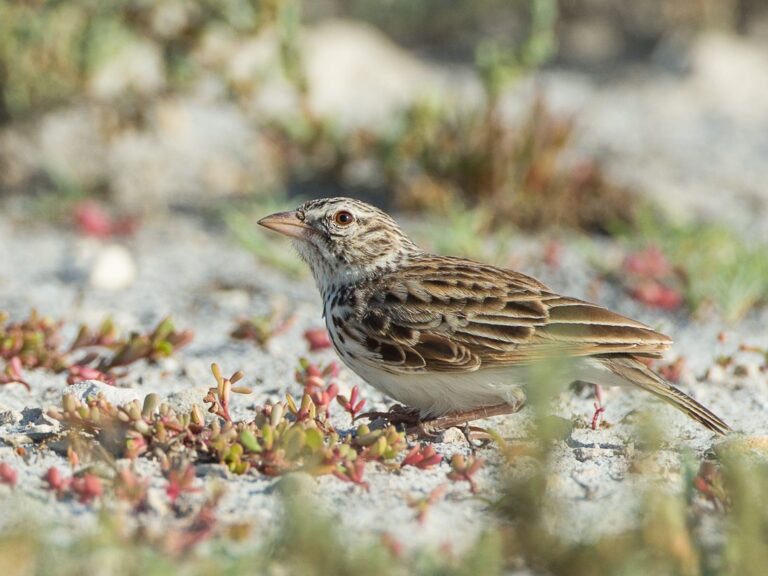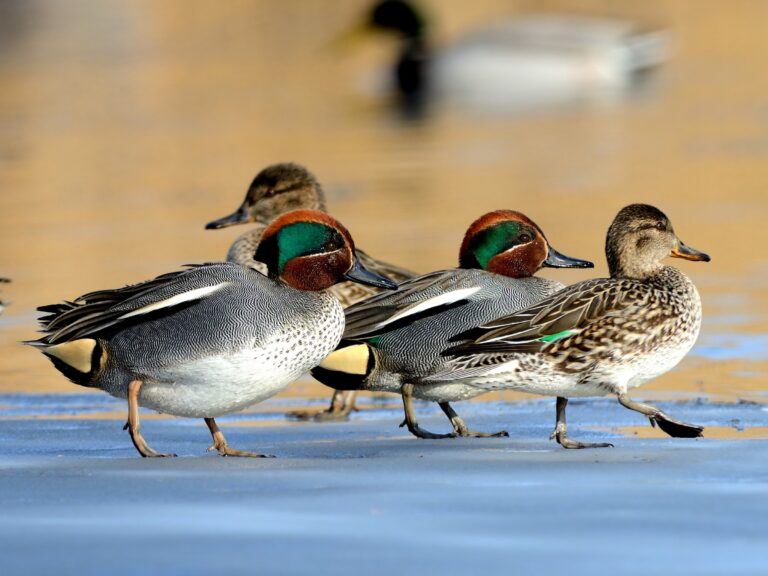Shining Bronze-Cuckoo Bird: A Fascinating Look at Its Habitat and Behavior
The Shining Bronze-Cuckoo is a fascinating bird known for its striking appearance and unique behaviors. This member of the Cuculidae family can be found in various habitats across Australia and New Zealand, where it thrives in dense foliage.
Its breeding habits set it apart, as it is a brood parasite, laying its eggs in the nests of other birds to be raised by unsuspecting foster parents.
These cuckoos display captivating feeding habits, often taking advantage of the presence of host birds to access food meant for the young. Their beautiful plumage and melodic calls make them a delight for birdwatchers.
Observing the Shining Bronze-Cuckoo in its natural environment offers a window into the complex interactions between species in the ecosystem.
Key Takeaways
- The Shining Bronze-Cuckoo is a brood parasite that uses other birds to raise its young.
- These birds are commonly found in Australia and New Zealand, favoring dense habitats.
- They have distinct feeding habits that influence their interactions with host species.
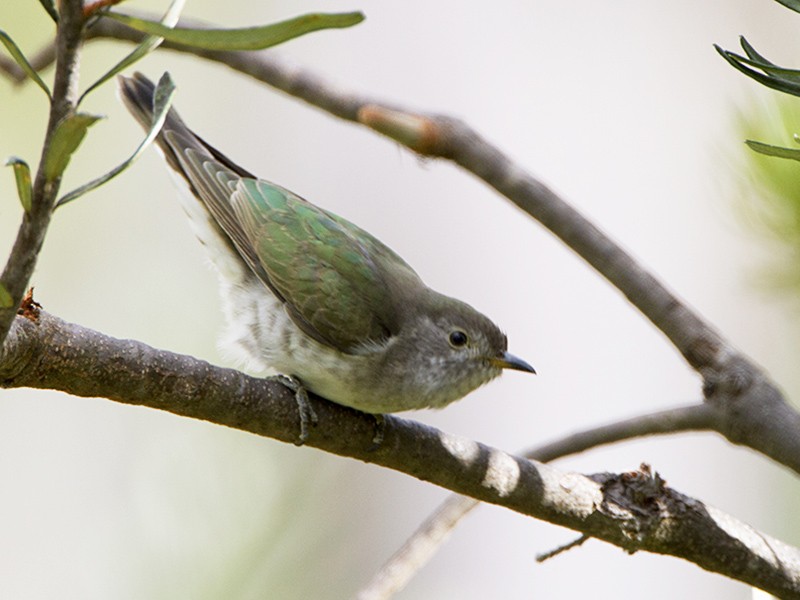
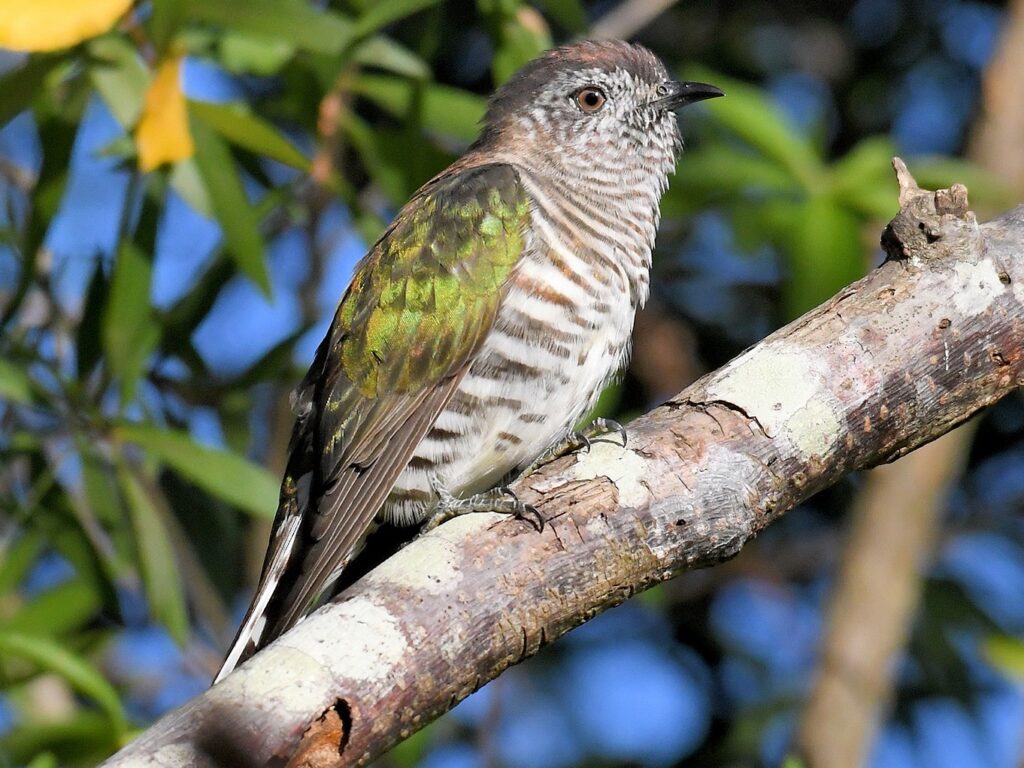
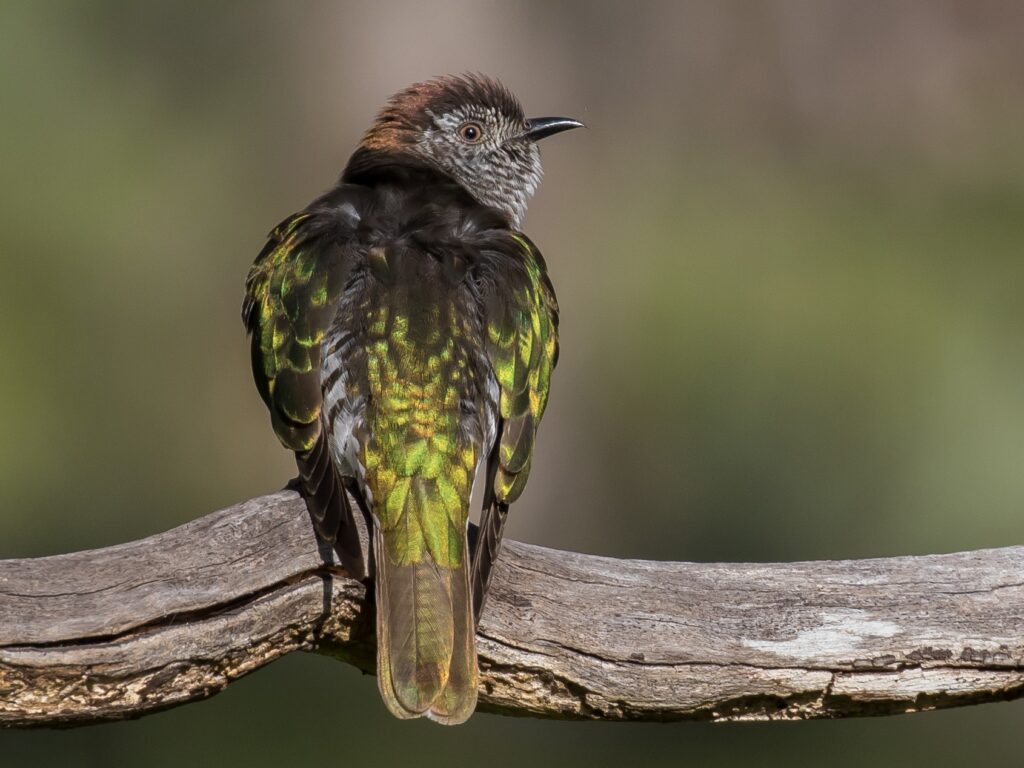
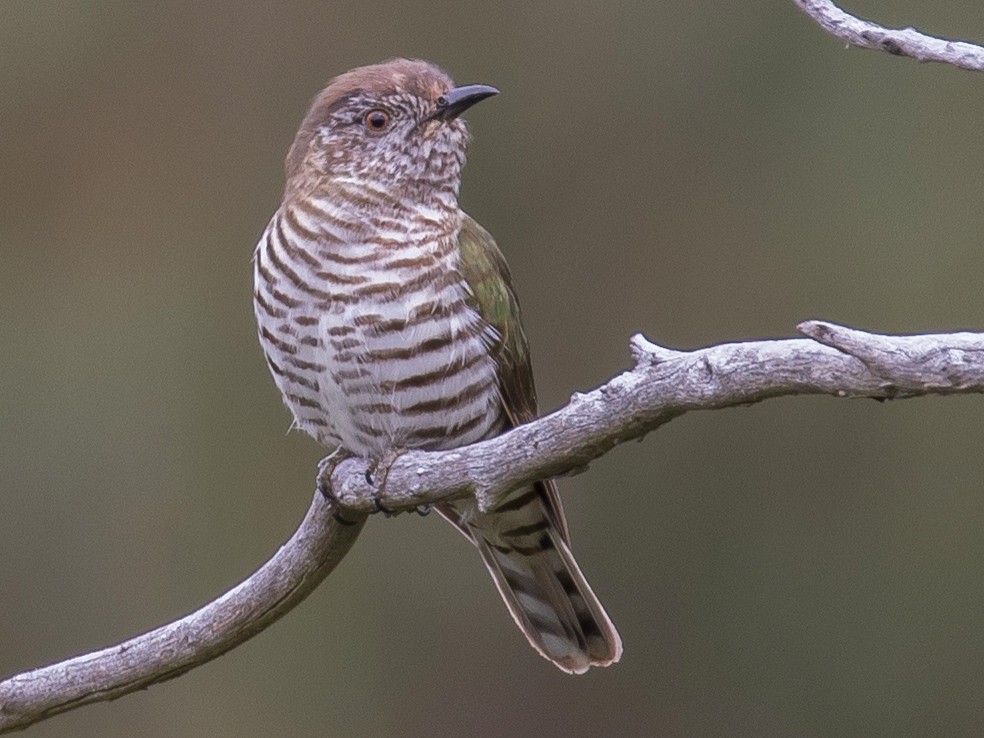
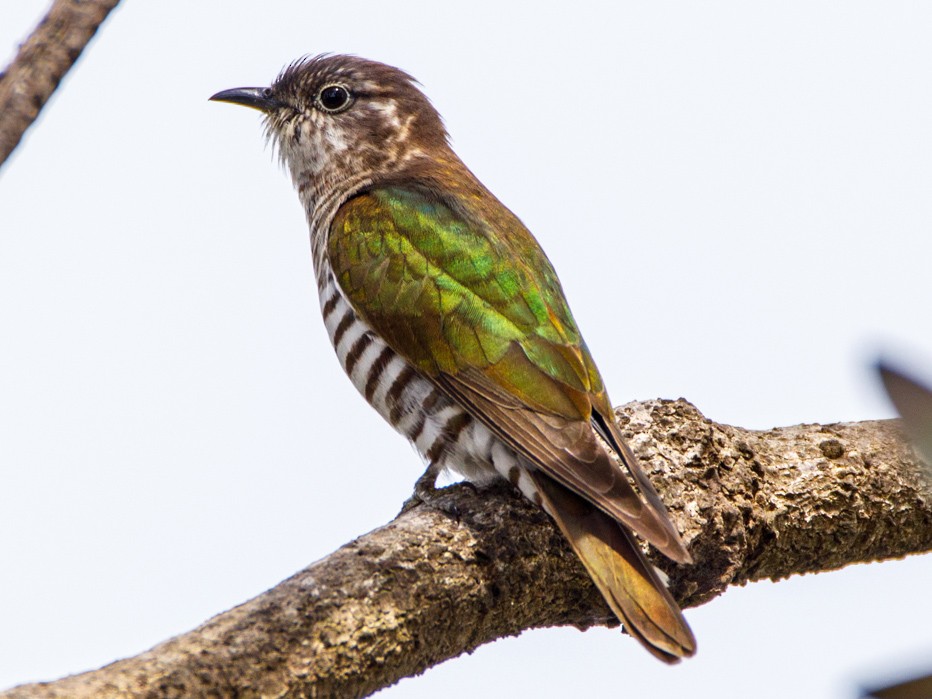
Taxonomy and Description
The Shining Bronze-Cuckoo, known scientifically as Chrysococcyx lucidus, belongs to the family Cuculidae. This bird is noted for its unique characteristics and classification within the cuckoo family.
Species Overview
The Shining Bronze-Cuckoo is part of the Chrysococcyx genus. It is commonly found in Australia, New Zealand, and the southwestern Pacific. The species has a close relationship with other cuckoos, such as the Little Bronze-Cuckoo (Chalcites minutillus).
This bird is often recognized for its brood-parasitic behavior, meaning it lays its eggs in the nests of other species. The Shining Bronze-Cuckoo primarily targets smaller birds, which raise its young.
Physical Characteristics
The Shining Bronze-Cuckoo exhibits striking physical features. Its plumage is predominantly iridescent green, which can appear almost black under certain lighting conditions. This glossy coloring helps it blend into its forested habitat.
The bird measures about 28 cm in length, with a long, slender body and pointed wings. It also has a distinctive curved beak suited for its diet, which includes insects and larvae.
Overall, these physical traits contribute to the Shining Bronze-Cuckoo’s adaptability in various environments.
Distribution and Habitat
The Shining Bronze-Cuckoo is mainly found across Australia and its nearby islands. It thrives in various environments, from woodlands to urban areas, and displays preferences that are essential for its life cycle.
Geographical Range
The Shining Bronze-Cuckoo has a broad geographical range. It is primarily located in eastern and southwestern Australia. Key states include Queensland, Victoria, South Australia, and Western Australia.
In addition to Australia, it can also be spotted in Tasmania. The bird has a significant presence in the Solomon Islands, New Caledonia, and Vanuatu. It has also been recorded in Papua New Guinea and parts of Indonesia, where its wintering ranges remain less understood.
Habitat Preferences
This cuckoo species prefers various habitats. It is commonly found in open woodlands, parklands, and sometimes urban landscapes.
The Shining Bronze-Cuckoo often seeks out areas with dense vegetation, providing cover and nesting sites. It favors habitats that support its brood parasitism behavior, primarily targeting the nests of smaller birds.
In rural regions, these cuckoos may inhabit gardens and orchards, as they provide ample food sources. The adaptability to different environments makes it successful in diverse climates across its range.
Breeding Behaviors
The breeding behaviors of the Shining Bronze-Cuckoo are shaped by its unique reproductive strategies and specific preferences for egg-laying and incubation. Understanding these can provide insights into how this bird interacts with its environment and its host species.
Reproductive Strategy
The Shining Bronze-Cuckoo employs a brood parasitism strategy, primarily targeting the nests of species like the Grey Warbler (Gerygone igata). It lays its eggs in the nests of these hosts, which often leads to the Grey Warbler raising the cuckoo chick as its own.
This strategy allows the cuckoo to maximize its reproductive success by reducing the time and energy spent on raising its young. The young cuckoo typically hatches before the host’s eggs and may even push them out of the nest. This behavior ensures it receives the full care of the host parents.
Eggs and Incubation
The eggs of the Shining Bronze-Cuckoo are small and glossy, often resembling those of its host species. This mimicry enhances the likelihood of successful rearing by the host bird.
The eggs usually measure around 18-20 mm in length, and their coloration is critical for deception.
Once laid, incubation is undertaken by the host, as the cuckoo does not invest time in this process. The incubation period generally lasts between 10 to 14 days, depending on the host species.
The host’s instinct to care for its own eggs leads to a nurturing environment for the cuckoo chick, significantly improving its survival chances in the wild.
Feeding Habits
The Shining Bronze-Cuckoo has specific dietary preferences and unique feeding techniques. Understanding these habits provides insight into their role in the ecosystem.
Dietary Preferences
The Shining Bronze-Cuckoo primarily feeds on caterpillars. These insects serve as a key food source, especially during the breeding season. Caterpillars provide essential nutrients for young cuckoos, helping them grow quickly.
Another important food item for this bird is the Magpie Moth. The larvae of these moths are also consumed, helping the bird meet its nutritional needs.
The Shining Bronze-Cuckoo shows a preference for soft-bodied insects, which are easier to digest compared to tougher prey. This selective diet influences its hunting and feeding behavior.
Feeding Techniques
The Shining Bronze-Cuckoo employs various techniques to obtain its food.
One common method is foraging. It searches through leaves and branches to find caterpillars and other soft-bodied insects.
This bird also uses its keen eyesight to spot prey. Once it identifies a potential meal, the cuckoo quickly swoops in to catch it.
Additionally, the Shining Bronze-Cuckoo is known for its mimicry. By mimicking the calls of host species, it may be able to access nests of other birds to feed on their young, although this behavior is less common.
Migration Patterns
The Shining Bronze-Cuckoo is known for its distinct migration behavior, influenced by seasonal changes and environmental factors. This bird’s movements occur at specific times of the year, driven by various triggers.
Annual Movements
The Shining Bronze-Cuckoo migrates primarily between habitats based on the changing seasons.
Their annual migrations typically occur from February to March as they leave their breeding grounds. They head towards warmer, tropical regions during this period.
In contrast, they return to their breeding areas in the southern hemisphere around August and September. These patterns are crucial for their reproduction and survival.
During migration, they cover long distances, demonstrating remarkable navigation skills.
Migration Triggers
Several factors trigger the migration of the Shining Bronze-Cuckoo.
One main trigger is the availability of food sources, which shifts with seasonal changes. As insects and other food become scarce in colder months, the cuckoos are prompted to move southward.
Weather conditions also play a critical role in migration timing. Changes in temperature and daylight hours signal the need to migrate. These environmental cues ensure the birds arrive at optimal breeding grounds in a timely manner, increasing their chances of successful reproduction.
Frequently Asked Questions
The Shining Bronze-Cuckoo is a fascinating bird with unique traits and behaviors. This section addresses common inquiries regarding its diet, differences from similar species, distinctive features, predators, habitats, and life cycle.
What is the typical diet of the Shining Bronze-Cuckoo?
The Shining Bronze-Cuckoo primarily feeds on the eggs and nestlings of other birds. It shows a preference for smaller species, often selecting hosts like warblers and other small passerines. Adults will also consume insects and fruits when available.
How does the Shining Bronze-Cuckoo differ from similar species?
The Shining Bronze-Cuckoo is often confused with the Horsfield’s Bronze-Cuckoo. It has a more vibrant plumage, with bright green and gold feathers. While both are brood parasites, the Shining Bronze-Cuckoo generally has larger body size and a different vocalization pattern.
Can you describe the distinctive features of the Shining Bronze-Cuckoo?
The Shining Bronze-Cuckoo has an iridescent green back and a pale underbelly with faint streaks. It possesses a long tail, which is often tipped with white. Its eyes are red, giving it a unique and striking appearance among cuckoos.
What are common predators of the Shining Bronze-Cuckoo?
Natural predators of the Shining Bronze-Cuckoo include larger birds of prey, such as hawks and eagles. Snakes and some mammals may also pose a threat to eggs and young chicks, especially when they are in the nests of host birds.
Where can the Shining Bronze-Cuckoo typically be found?
The Shining Bronze-Cuckoo is commonly found in Australia and New Zealand. It prefers environments such as woodlands, forests, and areas with dense vegetation.
During migration, it may also appear in Pacific islands and parts of Southeast Asia.
What are some interesting facts about the Shining Bronze-Cuckoo’s life cycle?
The Shining Bronze-Cuckoo is a brood parasite, laying its eggs in the nests of other birds.
The host parents often raise the cuckoo chick, which may outcompete their own young for food.
The cuckoo’s eggs usually hatch faster than those of the host, which gives the chick an early advantage.
